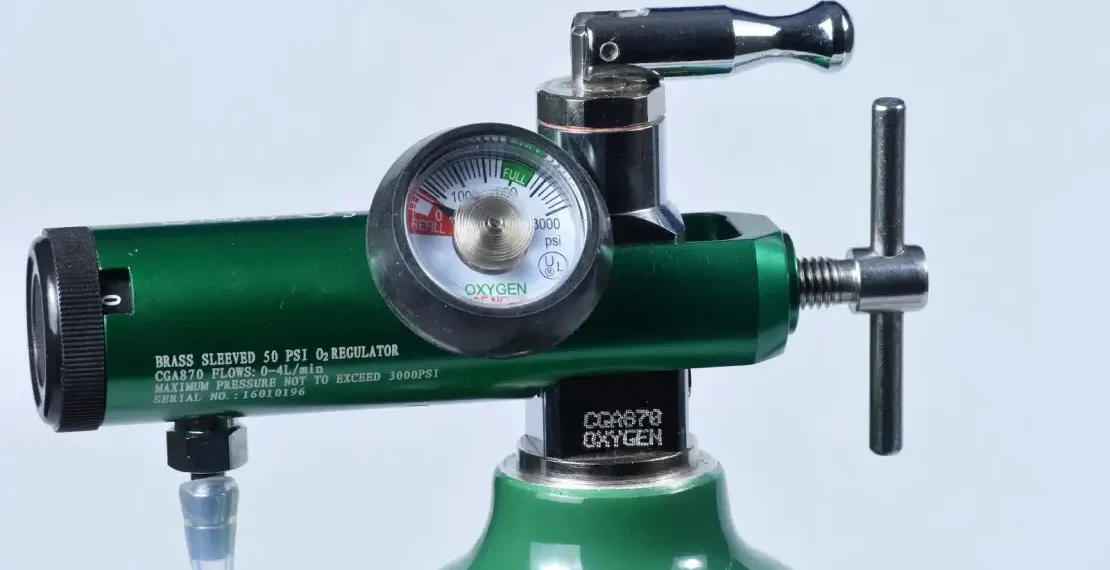Oxygen regulators are vital devices that help control the flow of oxygen from a cylinder to the user, ensuring safety, efficiency, and comfort. They are used in hospitals, clinics, home care, and even in industrial applications where oxygen supply is essential. Because regulators directly affect both performance and safety, shopping for the right one requires more than just looking at the price.
If you’re planning to purchase an oxygen regulator, here are some practical tips to guide your decision to shop oxygen regulators.
Table of Contents
1. Understand Your Purpose
The first step is to clarify why you need the oxygen regulator. Medical oxygen regulators differ from industrial ones in terms of flow rates, design, and safety features.
Medical use: Designed to deliver precise oxygen flow for patients, often with a low flow range suitable for home care, hospitals, and emergency responders.
Industrial use: Built for welding, cutting, or other applications where oxygen is used in combination with gases like acetylene.
Identifying your purpose ensures you choose a regulator built for your specific needs.
2. Check Compatibility with the Cylinder
Not all regulators fit all oxygen cylinders. Cylinders vary in size, valve type, and pressure capacity. To shop oxygen regulators, confirm:
Connection type: Medical cylinders often use pin index systems, while industrial ones may use CGA fittings.
Cylinder size: Portable oxygen tanks require compact regulators, whereas large stationary cylinders need more robust models.
Pressure rating: Ensure the regulator is rated for the cylinder’s maximum pressure, usually measured in PSI (pounds per square inch).
Getting the right match is essential for safety and performance.
3. Look at Flow Rate Options
Flow rate determines how much oxygen is delivered to the user or process. Medical oxygen regulators usually come with multiple flow settings ranging from 0.5 to 25 liters per minute (LPM), depending on the requirement.
For home use, a lower flow regulator may be sufficient, while hospitals and emergency responders may need higher flow options. Industrial regulators, on the other hand, must deliver steady high flow for cutting or welding tasks.
Choose a regulator with flow rate flexibility, especially if usage conditions might vary.
4. Prioritize Safety Features
Oxygen is highly reactive, and safety should never be compromised when handling it. Look for regulators with:
- Pressure relief valves to prevent over-pressurization.
- Built-in filters to reduce the risk of contaminants.
- Durable gauges that are shatter-resistant and easy to read.
- Medical-grade regulators should also comply with relevant safety standards and certifications.
5. Material and Build Quality
A good regulator should be made of durable materials that withstand both pressure and frequent use.
- Brass regulators are common in both medical and industrial settings due to their strength and corrosion resistance.
- Aluminum-bodied regulators are lightweight and preferred for portable cylinders.
- For medical use, ensure the regulator materials are non-reactive and safe for oxygen delivery.
- A well-built regulator will last longer, saving you from frequent replacements.
6. Consider Portability
If the regulator is meant for home care or emergency response, portability is key. Compact and lightweight regulators are easier to handle, especially when attached to portable cylinders. For industrial use, durability and stability may be more important than size.
7. Ease of Use
A regulator should be simple to operate, especially in medical settings where patients or caregivers may not have technical expertise. Look for:
- Clear, easy-to-read gauges.
- Large, smooth-turning adjustment knobs.
- Clearly marked flow rate settings.
The easier it is to use, the lower the risk of errors in oxygen delivery.
8. Warranty and Brand Reputation
Not all regulators are made equal. Reputable brands typically follow strict manufacturing standards and offer reliable customer support. Always check if the regulator comes with a warranty—it not only protects your investment but also reflects the manufacturer’s confidence in their product.
Before buying, read reviews, ask for recommendations, and compare models to ensure you’re getting a reliable product.
9. Cost vs. Value
While price is a factor, the cheapest option isn’t always the best. A low-cost regulator may wear out quickly, provide inaccurate flow, or even pose safety risks. Instead, weigh cost against durability, accuracy, and safety features. A slightly higher upfront investment often translates into better reliability and peace of mind.
Final Thoughts
Shopping for an oxygen regulator requires careful consideration of safety, compatibility, and performance. By understanding your purpose, checking cylinder compatibility, reviewing flow rate options, and prioritizing safety features, you can choose a regulator that meets your needs effectively.
Whether for medical or industrial use, a well-chosen oxygen regulator not only ensures efficiency but also protects lives and equipment. Always buy from trusted suppliers and never compromise on quality because when it comes to oxygen, precision and safety matter most.

